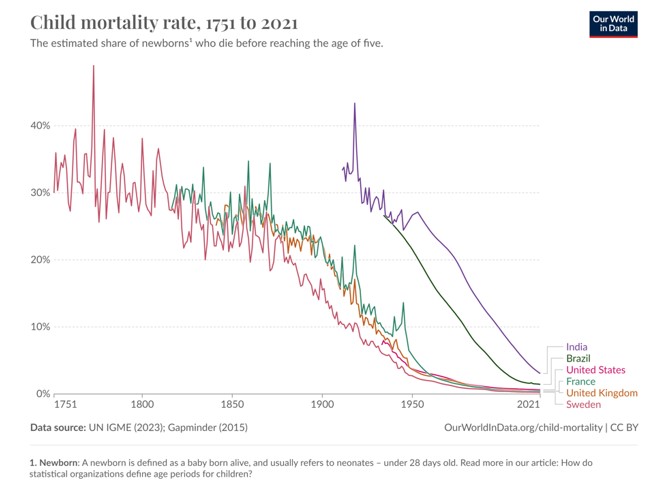Comprehensive Guide to Graph Analysis for IELTS
Comprehensive Guide to Graph Analysis for IELTS
26th Nov 2024 | Information
Mastering graph analysis is essential for achieving a high score in IELTS Academic Writing Task 1. This critical skill demands precision, clarity, and a keen eye for detail as you transform complex data into an informative text.
Before diving into the specifics of graph analysis, it’s crucial to understand the task itself. In IELTS Writing Task 1, you will be asked to analyze and describe a given visual representation of data, such as a graph, chart, or table.
Your task is to accurately convey the key trends, patterns, and relationships in the data, while maintaining clarity and coherence. Whether you are grappling with line graphs, bar charts, pie charts, or tables, this guide will equip you with strategies and vocabulary to excel.
Book your IELTS test today | British Council
You should begin by carefully reading the instructions to identify the following key points:
- Graph type: determine if it is a line graph, bar chart, pie chart, table, or a combination of these.
- Time frame: identify the period or range represented.
- Data points: understand the specific data you will need to describe.
- Task instructions: pay attention to any specific guidelines or requirements provided.
Crafting an Effective Overview in Graph Analysis
A well-crafted overview is the foundation of a successful graph analysis. It should encapsulate the main trends or patterns evident in the data. To achieve this:
- Identify key trends: determine the overall direction of the data, such as increases, decreases, fluctuations, or stability.
- Highlight major comparisons: compare different categories or groups within the graph to identify significant differences.
- Use appropriate language: employ precise vocabulary to describe trends, such as “steadily increased,” “dramatically declined,” or “remained relatively stable.”
A strong overview sets the stage for a detailed analysis and demonstrates your ability to synthesize information effectively.
Structuring Your IELTS Writing Task 1: Three Essential Steps
To excel in IELTS Writing Task 1, it’s crucial to structure your response effectively. This ensures clarity and coherence, helping you convey your analysis succinctly. Here are the three fundamental steps to follow:
1. Introduce the Graph
Begin with a clear and concise introduction that explains what the graph illustrates. This involves paraphrasing the graph’s title while including any relevant time frame. Your goal is to succinctly inform the reader about the subject and scope of the graph.
Example: “The line graph illustrates the changes in average temperatures in three major cities from 2000 to 2020.”
2. Provide an Overview
After introducing the graph, offer a brief overview that summarizes the main trends or significant features. This should highlight the overall pattern without delving into specifics. The overview acts as a roadmap for the reader, giving them a snapshot of what to expect in your detailed analysis.
Example: “Overall, the graph shows a steady increase in temperatures for all cities, with City A experiencing the most significant rise.”
3. Present Detailed Analysis
In this section, delve into the specifics of the graph. Discuss key data points, compare categories, and highlight any notable changes or patterns. Ensure you use precise vocabulary to describe trends and avoid overloading with too many figures. Organize this analysis logically, often in separate paragraphs, to maintain clarity.
Example: “From 2000 to 2005, City A’s temperature rose gradually from 15°C to 18°C. In contrast, City B remained relatively stable during this period. However, between 2010 and 2020, City A saw a dramatic increase, peaking at 25°C, while City B and City C showed moderate increases.”
4. Additional Tips:
- Paraphrasing: ensure that you paraphrase effectively in your introduction to avoid repetition of the graph’s title.
- Clarity and Cohesion: maintain a logical flow between paragraphs to enhance readability.
- Precision: use specific terms and accurate data points to support your analysis.
- Avoiding Redundancy be concise and avoid repeating information already mentioned in the overview.
Common Mistakes to Avoid
Successfully analyzing graphs in IELTS Academic Writing Task 1 requires precision and attention to detail. Avoiding common mistakes can significantly enhance your performance. Here are some pitfalls to watch out for:
1. Misinterpreting Data: one of the most frequent errors is misunderstanding the data presented. Ensure you accurately read the graph’s axes, labels, and units. Take the time to thoroughly understand what the data represents before you begin your analysis.
2. Overgeneralizing Trends: while identifying trends is crucial, avoid making overly broad generalizations. Be specific about the data points and avoid vague statements. Instead of saying “the sales increased,” specify “the sales increased by 20% from January to March.”
3. Ignoring Significant Details: key details, such as sudden spikes or drops, should not be overlooked. These details can provide important insights and add depth to your analysis. Always highlight and explain any notable changes in the data.
4. Failing to Compare Data Points: comparing different data sets or categories within the graph is essential for a comprehensive analysis. Highlight differences and similarities between groups, as this demonstrates your ability to interpret comparative data effectively.
5. Using Incorrect Vocabulary: precise language is vital in graph analysis. Avoid using vague terms and instead, utilize specific vocabulary that accurately describes trends. For example, use “significantly increased,” “plateaued,” or “declined sharply” to convey clear and accurate descriptions.
6. Overloading with Numbers: while it’s important to include relevant data, avoid overloading your description with too many numbers. Focus on the most significant figures that illustrate the main trends. Too many numbers can make your analysis confusing and hard to follow.
7. Lack of Structure: a well-organized response is easier to follow and comprehend. Structure your analysis logically, starting with an introduction to the graph, followed by the main trends, comparisons, and a conclusion. This clear structure helps the reader track your thought process.
8. Neglecting the Overview: the overview is a crucial part of your response. It should summarize the main trends without going into excessive detail. A strong overview sets the stage for a more detailed analysis and demonstrates your ability to synthesize information.
Correction Strategies
- Double-check Data Interpretation: always double-check your initial understanding of the graph. This helps avoid mistakes in interpreting the data.
- Practice with Varied Graphs: familiarize yourself with different types of graphs (line graphs, bar charts, pie charts, tables) to improve your adaptability and accuracy.
- Use Model Answers: study model answers to understand effective graph analysis techniques and vocabulary usage.
- Peer Review: practice writing graph analyses and have them reviewed by peers or tutors to identify and correct mistakes.
A Comprehensive Graph Analysis Example
To begin this analysis, we will examine the provided line graph.
You should spend about 20 minutes on this task.
The line graph below illustrates changes in child mortality rates across six countries from 1751 to 2021.
Summarize the information by selecting and reporting the main features and make comparisons where relevant.
Write at least 150 words.

The provided line graph illustrates a pronounced decline in child mortality rates across six nations—India, Brazil, the United States, France, the United Kingdom, and Sweden—over the span of two and a half centuries. While all countries experienced reductions, a stark contrast emerged between developed and developing nations.
Sweden and the United Kingdom spearheaded these improvements, achieving remarkably low mortality rates by the end of the period. Conversely, India and Brazil grappled with significantly higher rates for extended periods, although progress is evident in recent decades. The United States and France occupied an intermediate position.
The graph underscores the complex interplay of factors contributing to child mortality, including socioeconomic conditions, advancements in healthcare, and public health policies. Notably, while the overall trend is positive, persistent disparities between nations highlight the ongoing global challenge of ensuring equitable access to healthcare and reducing child mortality rates.
(145 words)

Lexis for Describing Data in Graph Analysis
The information provided about IELTS Academic Writing Task 1 serves as a great springboard for highlighting key vocabulary used to describe data in graphs. While we can’t delve into the entire activity, let’s focus on the aspects relevant to our analysis of infant mortality rates:
1. Trends
- General direction: increased, decreased, declined, rose, fell
- Rate of change: sharply, dramatically, significantly, gradually, steadily
- Comparison: higher than, lower than, more than, less than, like, different from
2. Data Points
- Specific values: remained at, reached a peak of, dropped to, fluctuated around
- Imprecise information: approximately, around, slightly
3. Highlighting Differences
- Contrasting trends: whereas, in contrast, on the other hand
4. Additional Vocabulary
- Overall trend: overall, in general
- Timeframe: over the course of, throughout
- Disparities: disparities, inequalities
Practice and Application
To solidify your understanding and ability to describe graph data, regular practice is essential. Work with various graph types and datasets to become familiar with different formats and trends.
Practice writing summaries and analyses within the word limit and under timed conditions to simulate the actual exam environment.
Utilize the sophisticated vocabulary and structures highlighted in this guide to enhance the quality of your responses.
Mastering graph analysis for IELTS Academic Writing Task 1 requires a strategic approach, a keen eye for detail, and the ability to articulate data trends clearly and concisely.
Visit the IELTS Canada homepage to find out more
Related articles:
How to prepare for IELTS Writing Task 2
Everything you need to know about the IELTS General Writing Task 1
